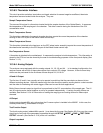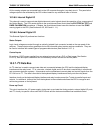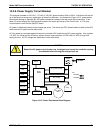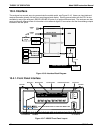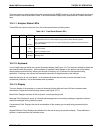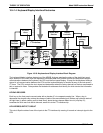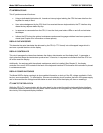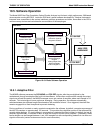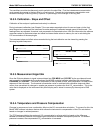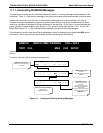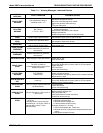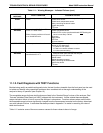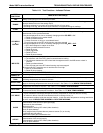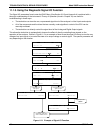
Model 360E Instruction Manual THEORY OF OPERATION
Two conditions must be simultaneously met to switch to the short filter. First the instantaneous concentration
must exceed the average in the long filter by a fixed amount. Second the instantaneous concentration must
exceed the average in the long filter by a portion, or percentage, of the average in the long filter.
10.5.2. Calibration - Slope and Offset
Calibration of the analyzer is performed exclusively in software.
During instrument calibration (see Chapter 7) the user enters expected values for zero and span via the front
panel keypad and commands the instrument to make readings of calibrated sample gases for both levels. The
readings taken are adjusted, linearized, and compared to the expected values, With this information the software
computes values for instrument slope and offset and stores these values in memory for use in calculating the
CO
2
concentration of the sample gas.
The instrument slope and offset values recorded during the last calibration can be viewed by pressing the
following keystroke sequence:
SAMPLE RANGE = 50.0 MGM CO =XX.XX
< TST TST > CAL SETUP
SAMPLE TIME = 16:23:34 CO =XX.XX
< TST TST > CAL SETUP
SAMPLE OFFSET = 0.000 CO =XX.XX
< TST TST > CAL SETUP
SAMPLE SLOPE = 1.000 CO =XX.XX
< TST TST > CAL SETUP
10.5.3. Measurement Algorithm
Once the IR photo-detector is signal is demodulated into CO2 MEAS and CO2 REF by the sync/demod board
and converted to digital data by the motherboard the M360E analytical software calculates the ratio between
CO2 MEAS and CO2 REF. This value is compared to a look-up table is used, with interpolation, to linearize the
response of the instrument. The linearized concentration value is combined with calibration slope and offset
values, then normalized for changes in sample gas pressure to produce the final CO
2
concentration. This is the
value that is displayed on the instrument front panel display and is stored in memory by the analyzer’s iDAS
system.
10.5.4. Temperature and Pressure Compensation
Changes in pressure can have a noticeable, effect on the CO
2
concentration calculation. To account for this, the
Model 360E software includes a feature which allows the instrument to compensation of the CO
2
calculations
based on changes in ambient pressure.
The TPC feature multiplies the analyzer’s CO
2
concentration by a factor which is based on the difference
between the ambient pressure of the sample gas normalized to standard atmospheric pressure. As ambient
pressure increases, the compensated CO
2
concentration is increased.
05232 Rev B3 189



